
Introduction of Fire Escape Staircase
Urbanization leads to the Construction of the High Rise building. It is also necessary to design high-rise building such that it will fulfil all the safety criteria.
It is necessary to provide fire escape in case of emergency or fire hazard. The staircase is one of the most preferred solutions for the safe emergency evacuations and fire escapes in case of emergency.
There are different types of exist that are provided to the building which are either horizontal or vertical. This exist plays a vital role during the emergency. In this article, you will get to know all about the fire escape staircase, fire escape staircase requirements.
Fire escape staircase is widely used in the high rise buildings to permit exit to the occupants. In every structure exist should comply with the minimum requirement.
Fire escape staircase plays a vital role in the multi-storey buildings as per as the safety is concerned. Fire escape staircase is made mostly with the Steel for fire retardant materials which match the architectural style and interior of the structure.
What Are Fire Escape Staircases?
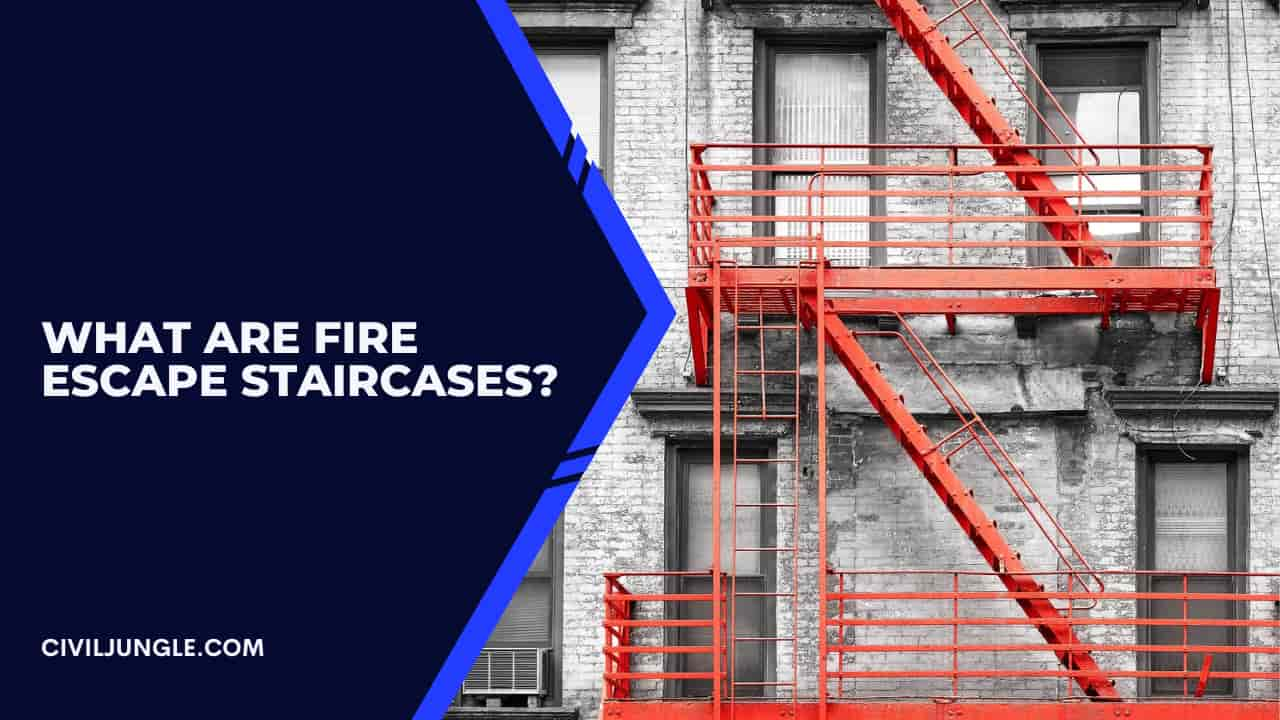
The Fire escape staircase as is a special type of emergency exist which plays an important role to safely exit from the building during an emergency or any fire hazard.
Fire escape staircase is widely used in the multi-storey residential buildings for commercial buildings. Every building should have a fire escape staircase to permit the safe escape of occupants in case of the emergency. Fire escape should be constructed with non-combustible materials.
The building should be properly designed and constructed as per the required fire safety according to the fire protection of the National Building Code of India. Fire escape stairs are mainly governed by the two main aspects which are the Stability and Access.
Types of Fire Escaping Stairs

Different types of fire escaping stairs are as follows
- Drop Ladder
- Counterbalanced Stairs
- Gooseneck Ladder
1. Drop Ladder
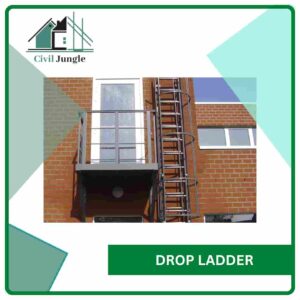
Drop letter is one of the best fire escape equipment which is widely used in case of emergencies. These types of order can be permanently fixed and it is safe and stable so that anyone can use it. The drop letter should be fitted close to the window so it can be easily used during the emergency.
2. Counterbalanced Stairs

Counterbalance staircase is the common method which is widely used to protect building occupants during the period of emergency. This type of staircase is applied to the tip of the stair flight that consists of cables and pulleys.
3. Gooseneck Ladder
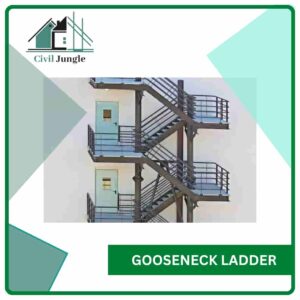
It is a vertical ladder that extends from the top floor of the terrace or balcony and used as a standard fire escape.
This type of ladder is attached to the top landing of the fire escape and extends and bends over the roofline and the bottom of this ladder should be secured to the roof system. Gooseneck ladder is a little bit complex and difficult to handle.
What Is the Importance of Fire Escape in the Building?
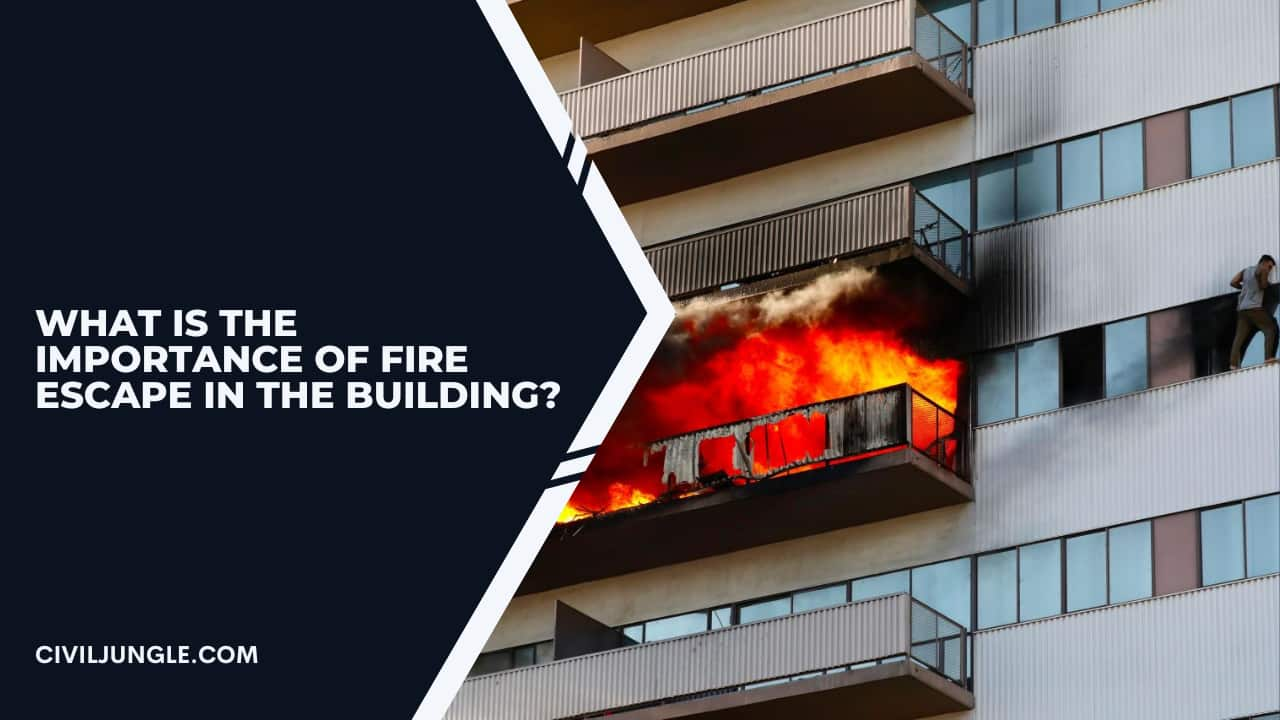
Due to urbanisation, there are high rise buildings construction are increasing. But it is necessary to construct and design the buildings as per the rules and regulations by considering all the safety provisions of the code of practice for fire safety of Buildings.
The emergency exit routes are very important which will provide a clear and safe way to escape from the building during a crisis or emergency. The exit routes can be provided in the form of Doors are staircases which will help to escape from the building.
Exterior Fire Escape Stairs Code
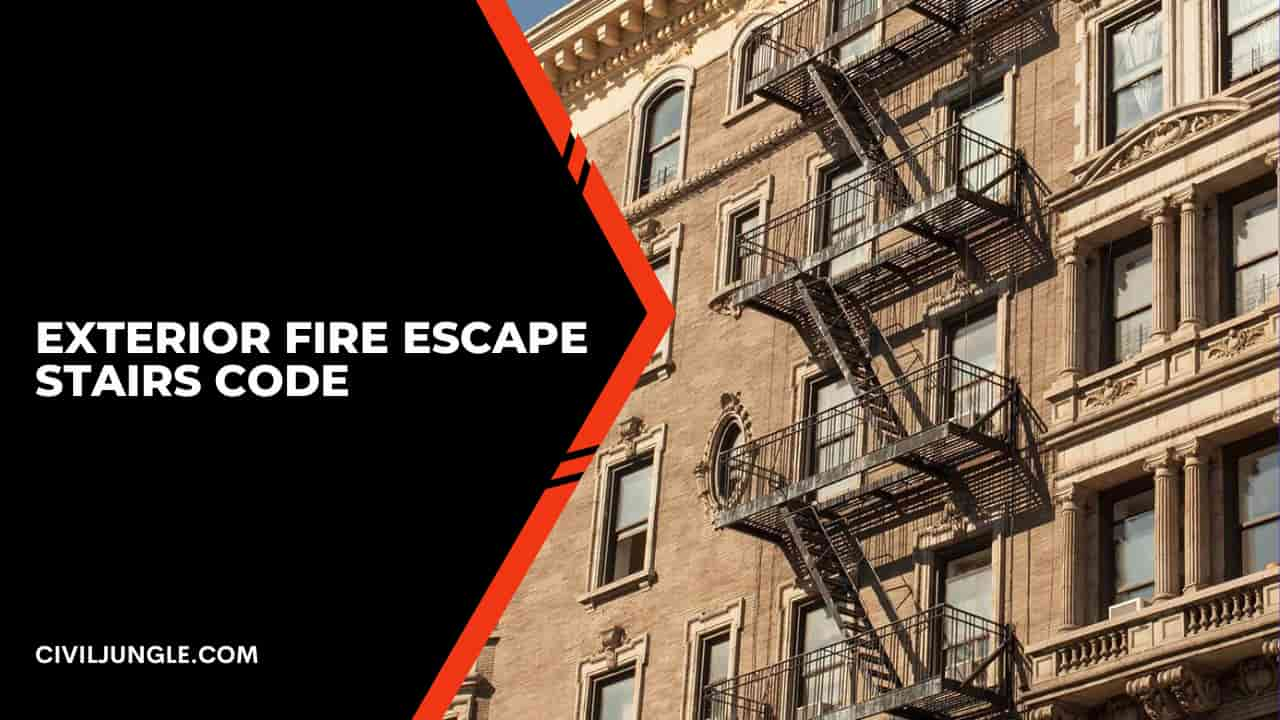
The design and dimensions of the fire escape staircase are governed by the Indian Standard Code of Practice for Fire Safety of the Building.
This code describes the fire escape staircase requirements and Fire stair dimensions. The material which is used in the exit routes should be fire-resistant and free from any type of obstructions so that the occupant can easily escape through it.
Fire Escape Staircase Regulations
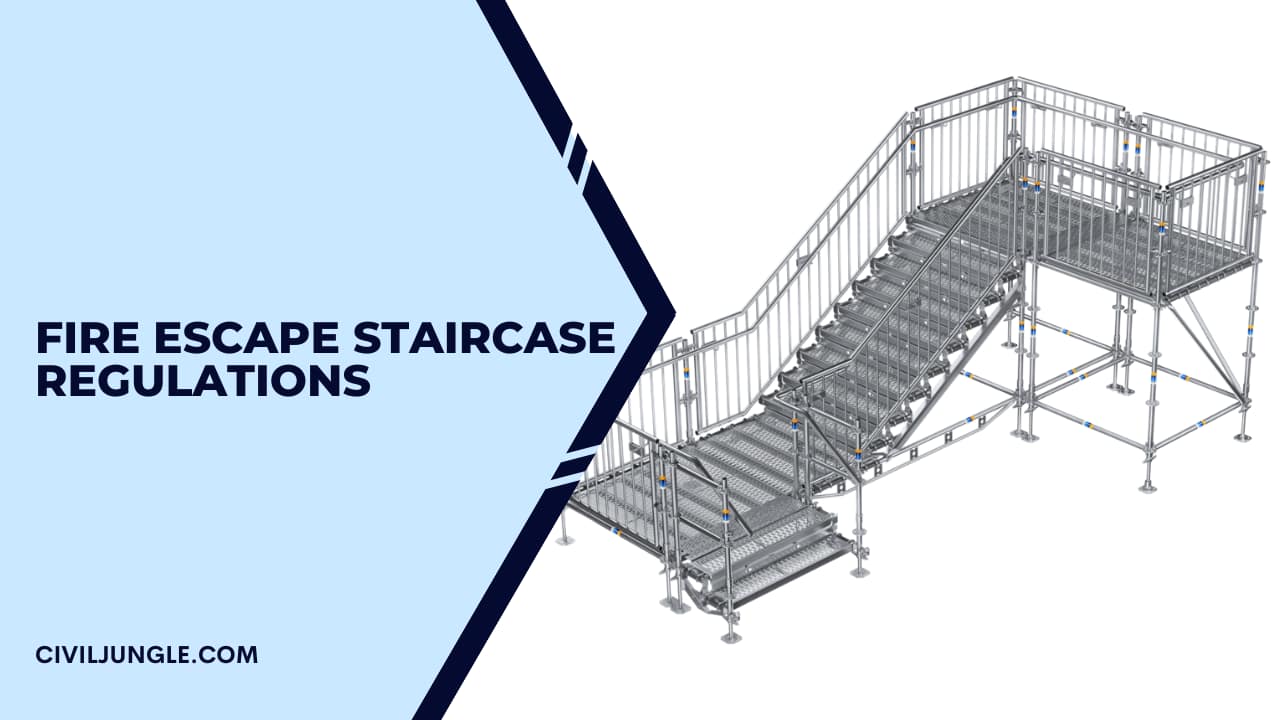
There are various regulations of fire escape staircase which are as follows
- The High rise buildings should have a minimum of two staircases and fire escape and it should be connected to the public areas and the common areas on the floors or ground.
- The route towards the fire escape stairs should be free from any type of obstruction.
- The fire escape staircase shall not be taken into consideration while calculating the number of staircases for the building.
- The entrance which is provided to the fire escape shall be separate and removed from the internal staircase.
- The door which leads a way towards the fire escape staircase should be made from the fire-resistant material.
- The fire escape staircase should have handrails of height not less than 1 metre.
- The fire escape staircase should be located such that it should have one side of the external wall which has a large opening for the exit.
- The spiral fire escape staircase should not be less than 1.5 metres in diameter and should have adequate headroom.
- All the fire escape staircase should be directly connected to the ground.
- Fire escape staircase should have straight flight not less than 25 metre in width and 25 cm treads and risers not more than 19 cm.
- The use of a spiral staircase should be limited to low occupant load and a building height of 9 meters.
- The main staircase and the fire escape staircase shall be continuous from the ground floor to the terrace level.
What Are the Fire Staircase Requirements?

There are different types of fire staircase requirements which are as follows
- The surface of the fire step should be slip resistance under all the conditions.
- The landing of the fire staircase should be a minimum length of 900 mm.
- The landing of fire stair should be designed properly at an appropriate interval.
- The handles of the fire staircase should be accessible by both sides.
- The distance between handrail and adjacent wall surface should be 50-60 mm minimum.
Fire Stair Dimensions
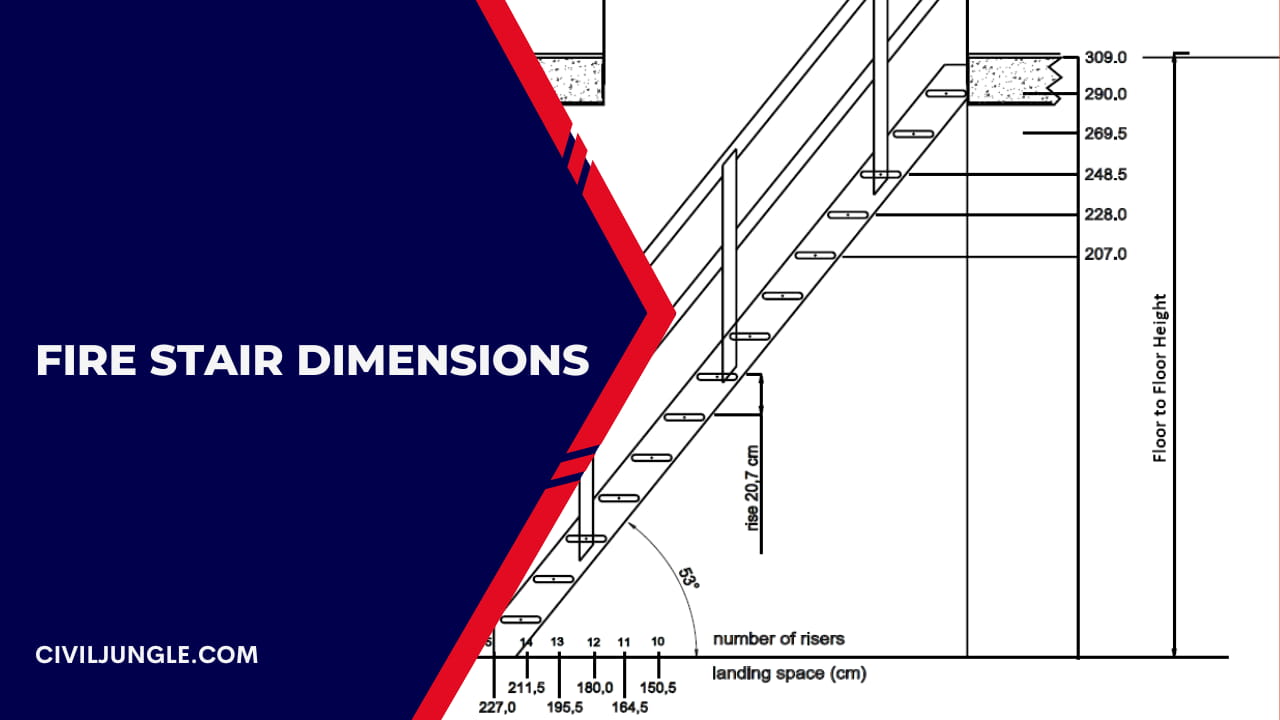
Fire stair should be designed as per the standard dimensions as follows.
- The length of the fire staircase should be a minimum of 900mm in length.
- The width of the fire escape staircase should not be less than 75 cm.
- The height of the fire escape staircase riser should not be more than 19 cm.
Fire Escape Staircase Material
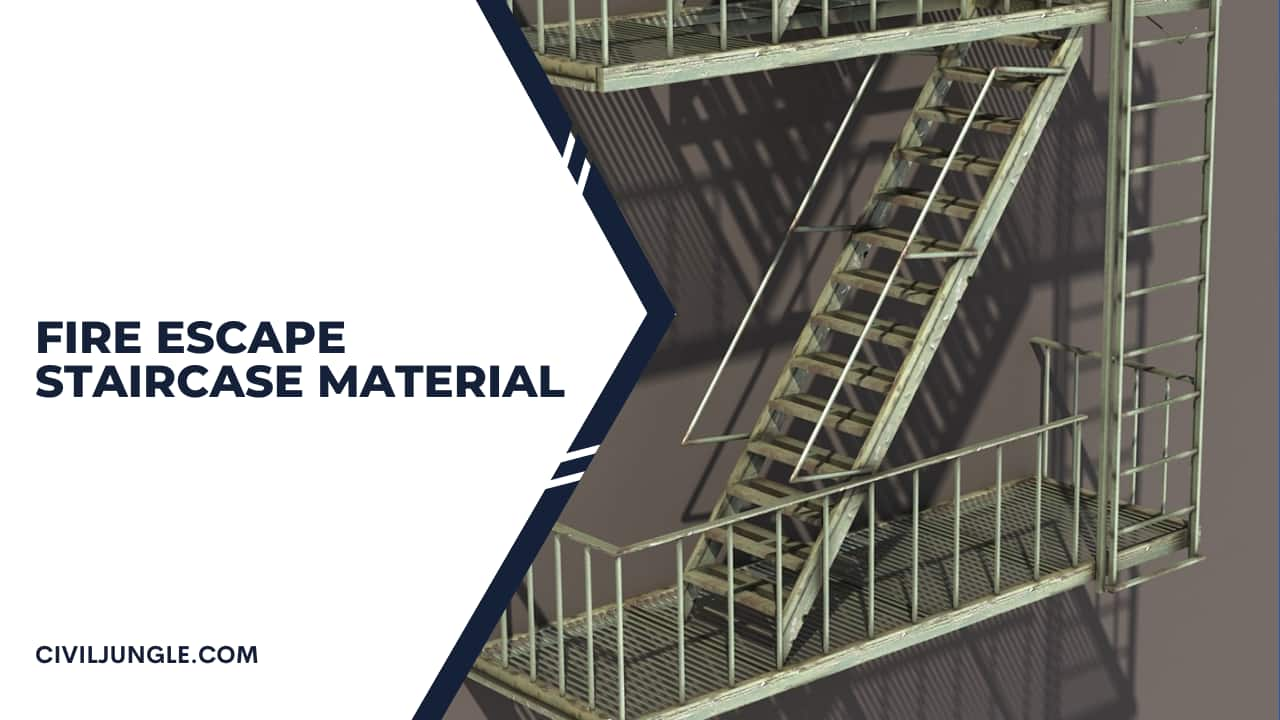
The fire escape staircase is made up of different types of materials which are as follows
- Aluminium
- Stainless Steel
- Galvanized Steel
- Concrete
Frequently Asked Questions (FAQs) about Fire Escape Staircases
What Is a Fire Escape Staircase?
A fire escape staircase is a designated emergency exit designed to provide a safe and effective means for occupants to evacuate a building during a fire or other emergency. It is constructed to be fire-resistant and is an essential component in high-rise buildings to ensure safety.
Why Are Fire Escape Staircases Important in High-Rise Buildings?
Fire escape staircases are crucial in high-rise buildings as they provide a safe evacuation route for occupants in the event of an emergency. They are designed to be fire-resistant and accessible, helping to prevent injury or loss of life during a fire.
What Materials Are Commonly Used for Fire Escape Staircases?
Fire escape staircases are typically made from materials such as steel (including galvanized and stainless steel), aluminum, or concrete. These materials are chosen for their fire resistance and durability.
What Are the Key Design Requirements for Fire Escape Staircases?
Key design requirements include:
- Must be constructed with non-combustible materials.
- Should have a minimum width of 75 cm.
- The risers should not exceed 19 cm in height.
- Must have slip-resistant surfaces.
- Should be equipped with handrails at least 1 meter high.
What Types of Fire Escape Staircases Are There?
Common types include:
- Drop Ladder: A fixed ladder that can be used in emergencies.
- Counterbalanced Stairs: Stairs with a counterweight system for stability.
- Gooseneck Ladder: A vertical ladder extending from a roof or balcony.
How Do Fire Escape Staircase Regulations Impact Building Design?
Regulations ensure that fire escape staircases meet safety standards, such as providing clear, unobstructed access, using fire-resistant materials, and including appropriate handrails and landing dimensions. Compliance with these regulations is essential for ensuring occupant safety and meeting legal requirements.
What Is the Role of Handrails in Fire Escape Staircases?
Handrails provide support and stability for occupants as they descend the stairs. They should be at least 1 meter high and positioned to allow easy access, with a minimum distance of 50-60 mm from adjacent walls.
How Are Fire Escape Staircases Tested for Safety?
Fire escape staircases are tested through simulations and inspections to ensure they meet design specifications and regulatory standards. Testing includes checking material integrity, structural stability, and functionality under emergency conditions.
Can Spiral Staircases Be Used as Fire Escapes?
Spiral staircases are generally not recommended for high-occupancy or high-rise buildings due to their limited width and complex navigation. They are typically reserved for low occupant loads and buildings up to 9 meters in height.
What Maintenance Is Required for Fire Escape Staircases?
Regular maintenance involves inspecting for structural damage, ensuring that surfaces are slip-resistant, and verifying that all components (such as handrails and landings) are in good condition. Any obstructions should be promptly removed to ensure clear access during emergencies.

